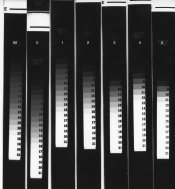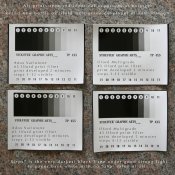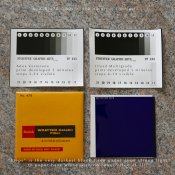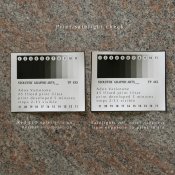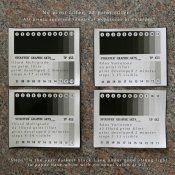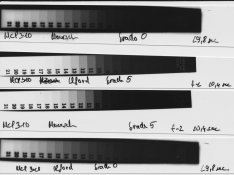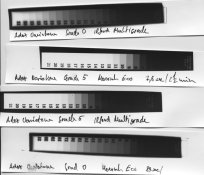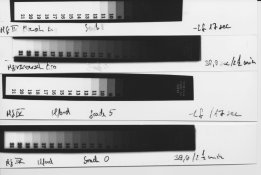konakoa
Subscriber
- Joined
- Sep 23, 2006
- Messages
- 194
- Format
- Large Format
Svenedin, sensitometry is the next step to find out what I've got going on. I've never been too interested in that other than some basics. Endless tests, entering plots, creating graphs, all to go 'pbbbt' when the paper I work with gets discontinued, the formulation suddenly changed or some essential commercially made chemical stops being made due to a lack of sales. When Craig75 says a density of 1.2 on my Ilford paper with a #5 is equivalent to a #2, I'm just taking his word for it. What I do know for certain is my #5 contrast is very poor.
I'm using condenser enlargers. Not much to go wrong with them. Inside are photo-grade purpose made bulbs. PH211 or a PH212 depending on what I'm doing. Not generic household bulbs. The condensers are spotless and crystal clear. My lenses are also immaculate. Zero fungus, no haze, no dust. There is nothing else besides heat absorbing glass between the light and the negative.
Yes, Fresh chemistry, new printing filters. I've done the Kodak safelight test several times, I'm good to thirty minutes where I quit the safelight test. I've looked for light leaks on the enlarger.
I'll probably get a third new set of filters in the event I've got some duds. Only thing else I can think of is to sample multiple papers from all the manufacturers to see if anything actually works.
Edit: I have a densitometer, and I checked my step wedge to see if it had faded with time. Each increment does increase by .15 for each step, and the densitometer is calibrated and reading correctly to the test materials it came with.
I'm using condenser enlargers. Not much to go wrong with them. Inside are photo-grade purpose made bulbs. PH211 or a PH212 depending on what I'm doing. Not generic household bulbs. The condensers are spotless and crystal clear. My lenses are also immaculate. Zero fungus, no haze, no dust. There is nothing else besides heat absorbing glass between the light and the negative.
Yes, Fresh chemistry, new printing filters. I've done the Kodak safelight test several times, I'm good to thirty minutes where I quit the safelight test. I've looked for light leaks on the enlarger.
I'll probably get a third new set of filters in the event I've got some duds. Only thing else I can think of is to sample multiple papers from all the manufacturers to see if anything actually works.
Edit: I have a densitometer, and I checked my step wedge to see if it had faded with time. Each increment does increase by .15 for each step, and the densitometer is calibrated and reading correctly to the test materials it came with.
Last edited:








